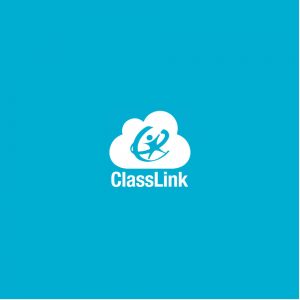Championing Fiscal Responsibility and a Strong Return on Investment, St. Vrain Valley Schools Lowers Rates for Property Taxes Collected in 2024
Championing Fiscal Responsibility and a Strong Return on Investment, St. Vrain Valley Schools Lowers Rates for Property Taxes Collected in 2024
Over the past decade, the St. Vrain Valley has experienced significant growth and is considered one of the most desirable places for outstanding public schools, jobs in fast-growth industries, abundant outdoor recreation, and an overall high quality of life. As homes and commercial properties have become more valuable, assessed valuations have also increased. The investment of the St. Vrain Valley community into our public schools through the passage of two Mill Levy Overrides, one in 2008 and one in 2012, has continued to provide a strong financial investment and foundation that has enabled St. Vrain to become one of the state’s leading school systems – recently achieving the highest on-time graduation rate in the Denver Metro Area at 93.3%, and the lowest dropout rate at 0.6%.
As the district has continued to strengthen and advance student achievement and opportunities, it has also focused heavily on strong financial management and systems that will ensure the best use of community resources and investment. This has included debt refinancing, payment structuring, and early debt payoff strategies which has saved taxpayers approximately $82.3 million over the past two decades. This includes $36.8 million saved in December alone, a testament to the district’s conservative financial planning and its dedication to the community’s economic well-being. The $82.3 million in savings does not go back to the district for other uses, and is solely for the benefit of the taxpayers. For property taxes collected in 2024, the district continues these efforts and has reduced the property tax mill levy rate by 1.147 mills.
“By judiciously managing our finances, we’ve been able to reduce the mill levy and still honor our promise to deliver a world-class education system,” said Greg Fieth, Chief Financial Officer. “This approach will also enable our community to continue to invest in our schools in a potential 2024 bond – including safety upgrades, critical infrastructure and maintenance needs, and provide classroom additions and construct new school buildings to address overcrowding and future enrollment – without raising taxes1.”
St. Vrain voters pass bond initiatives that are paid through property taxes. Bonds are used to make investments to increase school safety, complete critical building maintenance, add classroom and instructional space, build schools, and complete other bricks and mortar infrastructure projects – they are not used for hiring, operating schools, or increasing salaries.
St. Vrain Valley Schools is currently planning to recommend that a bond initiative be placed on the 2024 ballot that will not increase property taxes1, and will represent a significant investment in advancing the future of our community. The 2024 bond will focus on: providing the education that today’s students will need for tomorrow’s jobs and careers, including skilled trades (plumbing, electrical, and construction), computer systems, cybersecurity, healthcare, and more; improving safety and security in school buildings; performing critical building maintenance and replace outdated electrical, plumbing, and HVAC systems; continuing the district’s commitment to academic excellence, safety, and accountability; and providing classroom additions and construction of new school buildings to address overcrowding and future enrollment
The St. Vrain community also continues to experience growth in both population and economic strength, increasing the number of resources available to invest in our public schools. Due to existing community investment, strong financial management, and growth in population and economic strength, the 2024 bond will not require a new school district property tax or increase district property taxes1.
“It’s about fiscal responsibility and community trust,” said Dr. Don Haddad, Superintendent. “We are grateful for our community’s support and are committed to using resources in the most fiscally responsible way.”
In addition to the opportunity to pass a bond without increasing taxes for the community, the district’s strong financial position has also enabled significant investment in raising salaries for teachers, bus drivers, custodians, office professionals, campus supervisors, nutrition service workers, paraprofessionals, and so many others who support the academic success and well-being of our students. While the 2024 bond cannot be used for hiring or salaries, the district has leveraged existing resources and capitalized on the economy of scale across our large system to increase starting teacher salaries to one of the highest in Colorado.
“Offering competitive salaries is not just a necessity in the face of national staff shortages; it’s an investment that directly benefits our children and the community at large,” said Dr. Don Haddad, Superintendent. “We remain deeply committed to ensure that each and every student has access to the highest quality education and the very best teachers who will support their continued growth and advancement.”
This investment in teachers and school staff also contributes to the economic strength of the community. St. Vrain Valley Schools is the largest employer in the district’s 411 square mile footprint, with approximately 5,500 employees that serve approximately 33,000 students. Further, as the district continues to see student outcomes soar – such as graduation rates, Advanced Placement class enrollments, 80% athletics and co-curricular participation rates, significant student achievements in visual and performing arts, exponential growth in competitive robotics, and so much more, the quality of the education system is contributing significantly to the quality of the overall community.
High-quality schools provide a return on services valued in great excess of their funding.2 As a region’s quality and level of education increases, productivity, income, social stability and economic development also rise, while crime rates, health care dependence and public service costs decrease substantially.3,4,5
When calculating the public benefits of education in terms of high school graduation rates, the net economic benefit to the public is $127,000 per high school graduate.6 For the approximately 2,000 students who graduated from a St. Vrain high school in 2023, the lifetime positive economic impact on public funds puts an additional $254 million into our communities.
“Our transformational shift over the past 13 years has been focused on maximizing the returns on our community’s investments into our schools, while also giving our students a strong competitive advantage for future success,” added Dr. Haddad. “Public education is America’s most significant investment and – second only to parenting – is the greatest contributor to the future of our world. The quality of our schools impacts and strengthens our economy, public health and safety, national security, the quality of our service industry, residential and business property values, public health, our workforce pipeline, our democracy, and so much more.”
While the full return on investment and its benefits are often not seen until decades in the future, St. Vrain will continue to invest our resources to advance the future of not only today’s generation but also tomorrow’s.
1 Passage of the 2024 bond will not impose any new school district property tax and will not increase the district’s existing annual debt repayment obligation. Based on the current tax formula, it is specifically designed to not increase your existing school district taxes, and may even result in a lowering of existing property taxes, similar to the tax reduction the district made in January 2024.
2 Bogart, W.T. & Cromwell, B.A. (1997). How much more is a good school district worth? National Tax Journal, 50:2, 215-232.
3 Greenstone, M., et al. (2012). A Dozen Economic Facts About K-12 Education. The Hamilton Project.
4 Hanushek, E.A., Ruhose, J., & Woessmann, L. (2015). Economic Gains for U.S. States from Education Reform, National Bureau of Economic Research Working Paper No. 21770.
5 Berger, N. & Fisher, P. (2013). A Well-Educated Workforce is Key to State Prosperity. Economic Analysis and Research Network. Retrieved from http://www.epi.org/publication/states-education-productivity-growth-foundations.
6 Levin, H.M., et. al. (2007). The costs and benefits of an excellent education for all of America’s children. Center for Benefit-Cost Studies in Education (CBCSE), Teachers College, Columbia University, New York.


